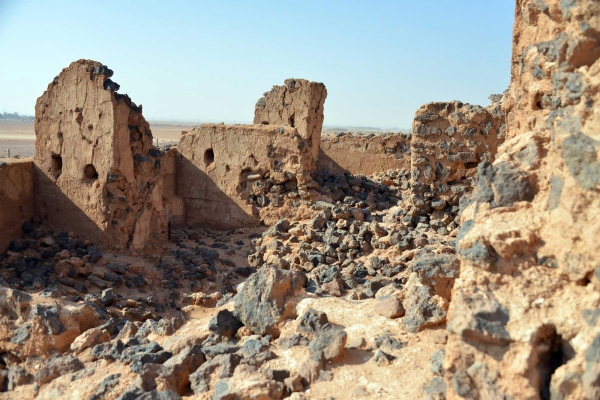




The Stations of the Basra-Makkah route in Qassim are archaeological sites in Qassim Province of the Kingdom of Saudi Arabia. These stations were built as rest stops for pilgrims traveling from the city of Basra in Iraq to Makkah al-Mukarramah. There are two main stations: An-Nabaj (currently al-Asyah) and Dariyah Station. More than sixteen primary and secondary stations have been recorded along the Basra-Makkah route that passes through Qassim Province.
Stations of the Basra-Makkah route
The Basra-Makkah route is one of the ancient Hajj routes, and it was not limited to pilgrims alone; many travelers used it to reach a specific destination or fulfill a need. The route is approximately 1,200 km long and features twenty-seven main stations. It begins in the city of Basra, passing through northeastern Arabia via Wadi al-Batin, crossing several desert areas, the most challenging of which is ad-Dahna' Desert. The route then passes through Qassim Province, known for its abundant fresh water, fertile valleys, and springs. After Qassim, the route runs parallel to the Kufa-Makkah al-Mukarramah route until they converge at the Um Khurman station (Awtas), located ten miles from the site of Dhat Irq.
Basra-Makkah route in the Abbasid era
The Basra-Makkah route extends from Basra in Iraq to Makkah al-Mukarramah. Most of the construction built there dates back to the Abbasid era. During the first century, it was well taken care of by the Umayyad governors of Basra, especially from al-Hajjaj Ibn Yusuf al-Thaqafi. During his trips to Makkah al-Mukarramah, al-Thaqafi used the Basra-Makkah route and checked the water of the stations. A number of Abbasid caliphs also took the Basra-Makkah route on their Hajj journey, such as Abu Jafar al-Mansur and Harun al-Rashid.
An-Nabaj station route
In the past, when pilgrims arrived at an-Nabaj station, they had a choice between two routes. The first was the main route, starting from an-Nabaj, heading to Makkah al-Mukarramah, and passing through several stations, including: al-Awsaja, Ramah, and Dariyah. The second and secondary route starts from an-Nabaj and leads to al-Madinah al-Munawwarah while passing through several stations, including: al-Hajj, al-Humaimah, al-Jafniah, an-Neqrah, and finally intersects with the Zubaydah Trail.
Landmarks of an-Nabaj station route
The main and secondary roads of an-Nabaj route located in Qassim Province are famous for several landmarks, including an-Nabaj site, al-Awsaja, Dariyah, Birkat al-Hajj, Birkat Tafkha, and Ramah.
Ancient Hajj routes
Ancient Hajj routes are bridges of communication between Islamic countries, as they transfer cultures and knowledge. Convoys of pilgrims took these paths to perform the fifth pillar of Islam.
People along these roads witnessed benefits in their trade and exchange of cultures and knowledge. The Hajj routes varied, including the Iraqi, Syrian, Egyptian, Yemeni, and Omani Hajj routes, among others.
Related quizzes
Related articles
